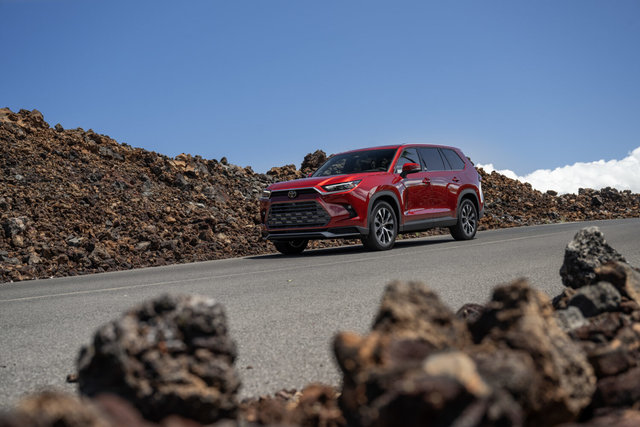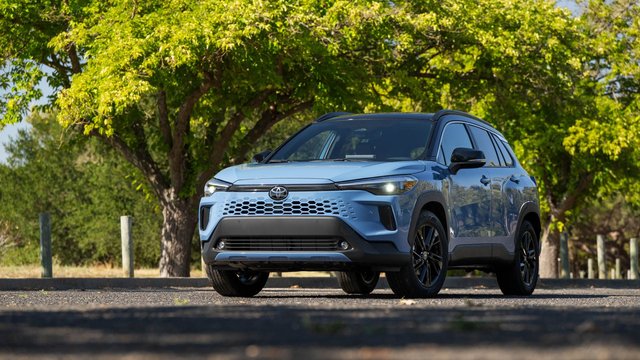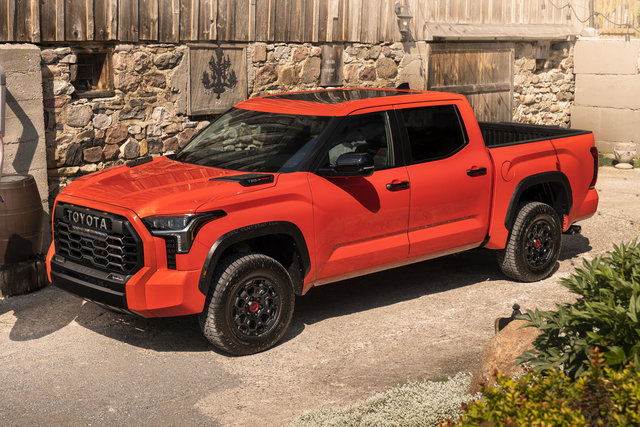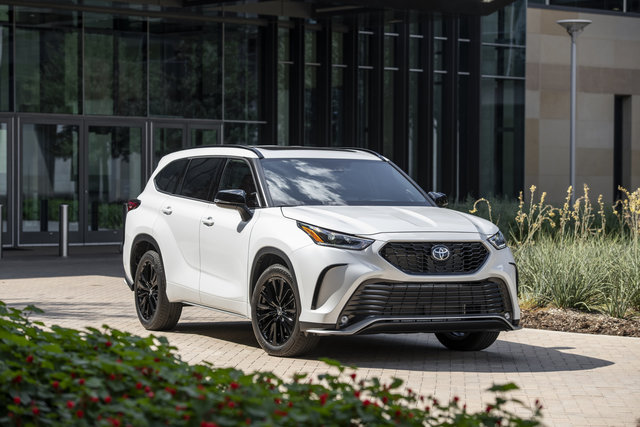If you're shopping for an affordable AWD compact SUV in Belleville, you've likely noticed RAV4...

Road trip planning starts with an honest family assessment. Your choice between the 2025 Toyota Highlander and Grand Highlander affects comfort, capability, and budget for years to come. The right decision emerges from understanding your actual needs rather than wishful thinking about ideal scenarios.
Smart families evaluate their travel patterns, passenger requirements, and financial priorities before committing to a three-row SUV. Your answers determine which Toyota model serves you best during the peak driving season and beyond.
How Many Passengers Do You Actually Carry?

The Highlander accommodates seven or eight passengers depending on configuration, while the Grand Highlander seats up to eight with more spacious third-row accommodation. Count your regular passengers during typical summer activities rather than occasional maximum loads.
|
Vehicle Model |
Seating Capacity |
Third-Row Space |
Best For |
|---|---|---|---|
|
Highlander |
7-8 passengers |
Compact but functional |
Families with younger children |
|
Grand Highlander |
7-8 passengers |
Adult-sized comfort |
Families with teenagers or tall passengers |
Families with teenagers benefit from the Grand Highlander's adult-sized third row, where older children travel comfortably rather than tolerating cramped conditions. The 2,949mm wheelbase provides legitimate legroom that transforms long drives from pleasant journeys rather than endurance tests.
Consider your passenger mix carefully:
- Two adults and three young children work well in either vehicle
- Add teenage passengers or grandparents and the Grand Highlander's extra space becomes significant
- Summer cottage trips with extended family reveal these differences clearly
The Highlander's more compact dimensions suit families who prioritize maneuverability and fuel efficiency over maximum passenger space. Urban parking and garage storage favour the smaller footprint without sacrificing essential family functionality.
What Does Your Summer Cargo Reality Look Like?

Standard cargo measurements tell only part of the story. Understanding your actual packing patterns determines which vehicle serves your family better during peak travel seasons.
|
Cargo Configuration |
Highlander |
Grand Highlander |
Real-World Impact |
|---|---|---|---|
|
Behind 3rd row |
453 litres |
586 litres |
133L difference = extra cooler + beach gear |
|
All seats folded |
2,387 litres |
2,761 litres |
374L difference = camping equipment advantage |
|
Loading width/length |
More compact |
Extra dimensions |
Easier accommodation of awkward items |
The numbers reveal practical differences. With rear seats folded, the Grand Highlander's 374-litre advantage accommodates larger camping gear, multiple bicycles, or sports equipment without roof cargo systems.
Summer travel challenges include:
- Bulky items like coolers, beach umbrellas, and sporting goods
- Extended family luggage during cottage trips
- Camping equipment that requires creative packing solutions
- Sports gear for multiple family members
The Grand Highlander's extra width and length handle these items more easily, reducing the need for external carriers or challenging packing arrangements.
Evaluate your typical summer load patterns honestly. Families who travel efficiently and prefer compact packing find the Highlander adequate. Those who bring comprehensive gear or travel with extended family benefit from the Grand Highlander's generous accommodation.
How Important Is Fuel Efficiency for Your Budget?
The Highlander Hybrid achieves 6.7L/100km combined consumption, making it the efficiency leader among three-row SUVs. The Grand Highlander Hybrid uses 7.0L/100km - a modest 0.3L/100km difference that accumulates over high-mileage families.
|
Powertrain Option |
Highlander |
Grand Highlander |
Annual Savings Estimate* |
|---|---|---|---|
|
Hybrid AWD |
6.7L/100km |
7.0L/100km |
$45 per 3,000km driven |
|
Gas AWD |
9.9L/100km |
10.3L/100km |
$60 per 3,000km driven |
|
Towing Capacity |
1,588 kg (3,500 lbs) hybrid 2,268 kg (5,000 lbs) gas |
2,268 kg (5,000 lbs) both |
Efficiency vs capability trade-off |
*Based on current fuel prices and typical driving patterns
Summer driving patterns amplify these differences:
- Frequent cottage trips and camping expeditions add thousands of kilometres annually
- Extended family visits require longer drives than daily commuting
- Air conditioning loads increase fuel consumption across all powertrains
- Mountain driving and full passenger loads test efficiency limits
The Highlander's efficiency advantage saves approximately $45 per 3,000km of driving at current fuel prices. High-mileage families accumulate meaningful savings by choosing the smaller model, while occasional drivers see minimal impact.
Your fuel budget tolerance affects this decision significantly. Families prioritizing efficiency choose the Highlander Hybrid for maximum savings. Those valuing space over fuel costs find the Grand Highlander's extra consumption worthwhile for the additional capability.
Do You Need Maximum Towing Capability?

The Grand Highlander Gas models tow up to 2,268 kg (5,000 lbs), handling larger trailers, boats, or campers. Highlander models manage 1,588 kg (3,500 lbs) for hybrid versions and 2,268 kg (5,000 lbs) for gas variants.
Summer recreational activities often involve towing. Boat launches, camping trailers, and utility trailers define your requirements more than theoretical maximums. The Grand Highlander's extra mass provides stability when towing larger loads through mountain terrain or highway crosswinds.
Hybrid models sacrifice some towing capacity for efficiency gains. Families who tow regularly should consider gas powertrains, while occasional towers find hybrid capability sufficient for smaller trailers and recreational equipment.
Evaluate your towing frequency and load sizes realistically. Occasional small trailer use works fine with either vehicle, but regular heavy towing favours the Grand Highlander's additional capability and stability.
How Does Pricing Affect Your Decision?

The Highlander starts at a lower price point while the Grand Highlander commands a premium for additional space and capability. Your budget determines whether the Grand Highlander's benefits justify the extra investment.
Compare total ownership costs rather than purchase prices alone. Fuel consumption differences, insurance rates, and resale values affect long-term expenses. The Highlander's efficiency may offset its Grand Highlander's higher capability over time.
Consider financing implications carefully. Monthly payment differences accumulate significantly over loan terms, affecting your family's budget flexibility. The right choice balances capability needs with comfortable payment obligations.
Trim level selection within each model affects pricing substantially. A well-equipped Highlander may cost more than a base Grand Highlander, making feature comparisons essential rather than model comparisons alone.
Test Your Assumptions
Summer road trip success depends on choosing the SUV that matches your family's actual patterns rather than aspirational scenarios. Both vehicles provide excellent capability, but your specific needs determine which serves you better.
The Highlander rewards families prioritizing efficiency and maneuverability without sacrificing essential functionality. The Grand Highlander serves those who value space and capability above other considerations.
Schedule back-to-back test drives with realistic passenger and cargo loads to understand how each vehicle accommodates your family's summer travel style. Your decision becomes clear through direct comparison rather than specification analysis.
Other Articles That May Interest You
Towing a boat to Sandbanks Provincial Park or hauling a camper through Picton's winding roads...
Advanced driver assistance systems have moved from luxury-car exclusives to standard equipment on...






